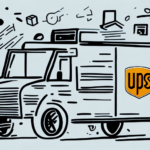Understanding USPS Priority Mail
USPS Priority Mail is one of the United States Postal Service's most popular shipping options, known for its reliability and speed. This service offers delivery within 1-3 business days, making it a preferred choice for both personal and business shipments. Priority Mail includes tracking and delivery confirmation, providing peace of mind for senders and recipients alike.
One of the standout features of USPS Priority Mail is its flat rate pricing for specific package sizes. This means that regardless of the package's weight or destination within the U.S., shipping costs remain consistent as long as the items fit within the designated flat rate boxes or envelopes. This pricing structure can be particularly cost-effective for heavier items or long-distance shipments.
USPS Priority Mail Insurance
What is USPS Priority Mail Insurance?
USPS Priority Mail includes basic insurance coverage up to $50, automatically included with your shipment. This coverage protects against loss or damage during transit. For valuable items, additional insurance can be purchased, offering coverage up to $5,000. The cost of insurance varies based on the declared value of the package, starting at $2.50 for higher-value items.
Coverage Details
USPS Priority Mail Insurance covers a wide range of items, including merchandise, documents, and other valuable goods. However, certain items such as cash, jewelry, and hazardous materials are excluded from coverage. It's crucial to understand these limitations to ensure your items are adequately protected.
Cost of Insurance
The cost of insuring a package with USPS Priority Mail is determined by the declared value of the contents. For packages valued up to $5,000, insurance can be purchased directly through USPS. For items exceeding this amount, third-party insurance providers may be necessary to secure additional coverage.
Limitations and Exclusions
While USPS Priority Mail Insurance offers robust protection, it does have limitations. The maximum coverage per package is $5,000, and certain high-value or restricted items are not eligible for coverage. Additionally, the insurance does not cover the cost of shipping itself, only the value of the contents.
Comparing USPS Priority Mail Insurance with Other Carriers
When evaluating shipping options, it's essential to compare insurance offerings across different carriers. For instance, FedEx and UPS provide similar insurance services, often with higher coverage limits and additional features. However, these services typically come at a higher cost compared to USPS Priority Mail.
According to the Shipping Solutions Report 2023, USPS Priority Mail remains a competitive option for small to medium-sized businesses due to its balance of cost and coverage. On the other hand, enterprises shipping high-value items may prefer carriers offering more extensive insurance options.
What to Do if Your USPS Priority Mail Package is Lost or Damaged
If your USPS Priority Mail package is lost or arrives damaged, it's important to act promptly. Start by filing a claim through the USPS website or visiting your local post office. You'll need to provide proof of the package's value, such as a receipt or invoice, and details about the shipment.
USPS has specific timeframes for filing claims: generally, claims must be filed within 60 days for lost items and within 15 days for damaged items. Providing comprehensive documentation can expedite the claims process and increase the likelihood of reimbursement.
Tips for Shipping with USPS Priority Mail and Ensuring Proper Insurance
Accurate Valuation
Always declare the accurate value of your items when purchasing insurance. Under-declaring can result in insufficient coverage, while over-declaring may incur unnecessary costs.
Proper Packaging
Use sturdy packaging materials to protect your items during transit. USPS offers free Priority Mail boxes and envelopes, which are designed to withstand the rigors of shipping.
Additional Insurance for High-Value Items
If you're shipping items exceeding $5,000, consider purchasing additional insurance through a reputable third-party provider to ensure full coverage.
Utilize Tracking Services
Take advantage of USPS tracking services to monitor your package's journey. This helps in identifying any delays or issues promptly, allowing you to take necessary actions swiftly.
Frequently Asked Questions about USPS Priority Mail Insurance
- Q: Does USPS Priority Mail insurance cover international shipments?
A: Yes, USPS Priority Mail insurance covers international shipments, subject to the same coverage limits and restrictions as domestic shipments. - Q: Can insurance be purchased after the package has been shipped?
A: No, insurance must be purchased at the time of shipping. Once the package is in transit, additional insurance cannot be added. - Q: What is the maximum coverage provided by USPS Priority Mail insurance?
A: The maximum coverage is $5,000 per package.
It's important to note that USPS Priority Mail insurance does not cover shipping costs or fees, only the value of the contents. Additionally, prohibited items such as cash, jewelry, and hazardous materials are not eligible for insurance coverage.
Conclusion: Making the Best Decision for Your Shipping Needs and Budget
USPS Priority Mail offers a reliable and cost-effective shipping solution with built-in insurance coverage, making it suitable for a wide range of shipping needs. By understanding the nuances of USPS Priority Mail Insurance, including its coverage limits and exclusions, you can make informed decisions to protect your valuable shipments.
For higher-value items, exploring additional insurance options or comparing with other carriers might be necessary to ensure comprehensive protection. Ultimately, choosing the right shipping and insurance strategy will help safeguard your packages and provide peace of mind.






















